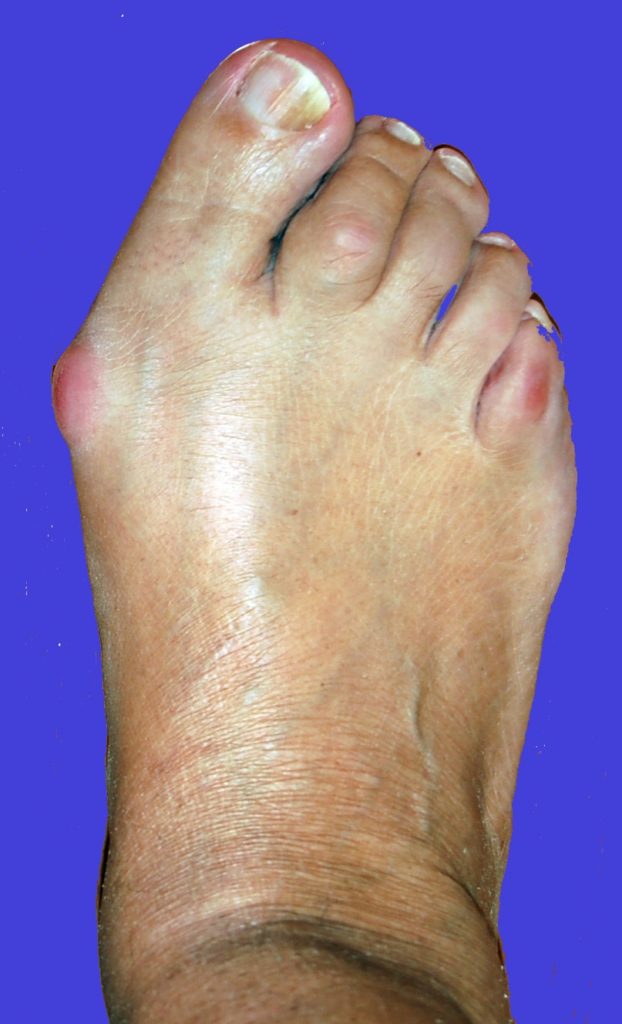Foot - bunions
What is hallux valgus?
Hallux valgus, or bunions, is a bone deformity that most commonly affects the big toe. The toe starts to turn towards the smaller toes, and the first metatarsal that runs along the foot to the base of the big toe starts to turn in the opposite direction (i.e. pointing towards the other foot). As a result, the joint where the toe meets the metatarsal forms a point which starts to rub against your shoe. At first, a soft fluid swelling forms over the point, but then the underlying bone thickens, creating an even larger bump. This malformation stops the big toe working correctly, and you will have difficulty and pain walking. Eventually the big toe may start to move out over or under the second toe, forcing it out of position and making it rub against your shoe, causing further pain. In older patients, an untreated hallux valgus can also cause osteoarthritis.
What causes it?
Bunions are often hereditary, due to the form of your foot – particularly if you have flat feet. Overly tight, pointed or high heeled shoes can also cause bunions, and this – along with the fact that women’s ligaments are looser and less able to hold the toe bones in place – may explain why women suffer from bunions more than men.
How does it feel?
You will have pain on the bunion itself, and along the inside of the foot. Tight shoes will make the pain worse. As the bunion gets bigger, the more painful and difficult it will be to walk.
Diagnosis
Your doctor will examine your foot and test how far you can move the toe. He will ask for X-rays of both feet (while you are standing) so that he can see the exact angle of the toe and first metatarsal before deciding on the most appropriate treatment. He may also ask you questions about the kind of footwear you use.
Treatment – conservative
As it is the pressure of your shoe on the bunion that causes the irritation of the tissues, a first step will be to remove the pressure by wearing wider and softer shoes that can accommodate the bunion, and/or using bunion pads or toe spacers. In early cases of bunions, non-surgical treatment can be successful, although with more pronounced deformities surgery will be necessary to resolve the problem.
Treatment – surgical
Bunionectomy/ First Metatarsal Osteotomy: depending on the type of bunion, your surgeon will choose to perform either a traditional or a “mini-invasive” procedure.
When will I be back to normal?
It will take about 6 weeks for all the tissues to heal completely, although you can follow an almost normal lifestyle in the meantime. Your ability to start driving again will depend whether your car is automatic or manual, and which foot has been operated on.
